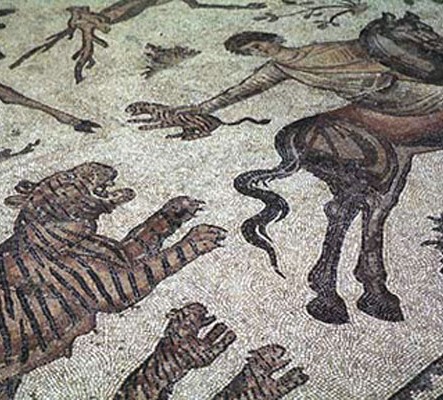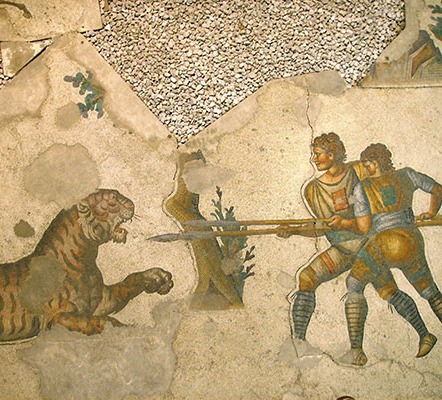Stopping Domestic Tiger Breeders
People have captured and displayed wild animals for thousands of years. Some of the earliest documentation of this activity comes from mosaics depicting the menageries, canned hunts, and gladiatorial games in the amphitheaters built by ancient Romans across their empire. The popularity of these games is largely responsible for the extinction of certain animal species in parts of the Roman-controlled world. Hunting and transporting wild animals were big business across the Roman Empire for centuries.
Zoo Culture
Over time, wealthy European hunters would capture animals in exotic locations and set up private menageries to display their living trophies. As this practice spread to the U.S., the menagerie owners would grow bored with their animals - or their fortunes would change - and they would donate their collections to a nearby city like a local attraction or public zoo. The first zoo in the United States was established in Philadelphia in 1873.


Zoos grew in popularity and became part of a city's public life. By 1924 there were enough zoos to form the American Association of Zoological Parks and Aquariums (AZA). More zoos needed more animals, so professional hunters and dealers filled the demand by importing them from the wild.
Eventually, some of these animals would reproduce successfully in captivity, and by the 1950s, these captive-born animals were available to new city zoos as they were established across the country. There was no such thing as zoo surplus because there was always a new zoo to take the offspring of captive-breeding pairs.
Zoo Nurseries
Then a zoo discovered that if you put a window in the 'nursery,' people would flock to see the cute tiger and lion cubs. How could zoos resist the temptation? They didn't. The constant demand for new babies led to the dilemma of where to put them when they grew too large, and the public was clamoring for new babies.
While old babies languished in cages out back, a new industry grew up to transport animals between zoos. Eventually, the Animal Welfare Act made zoos too expensive to run, and a glut of exotic animals saturated existing markets.
Controlled Hunts
Enter the hunting ranches, the backyard tiger breeders, and the roadside zoos. Tigers are easy to breed in captivity, and the huge numbers of zoo surplus tigers led to the crazy overpopulation of tigers held by private owners today. Zoo breeding programs and surplus problems continue around the world, but especially in America.


